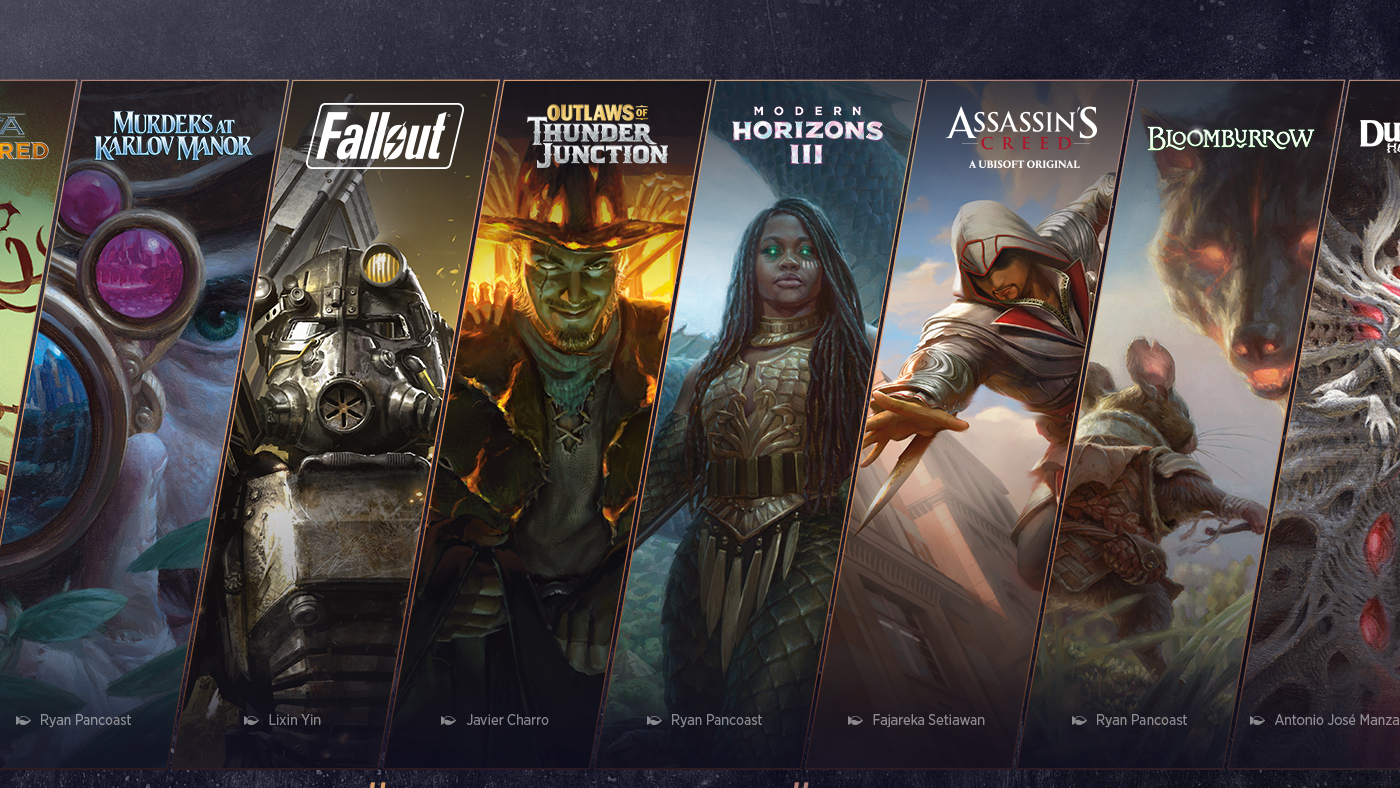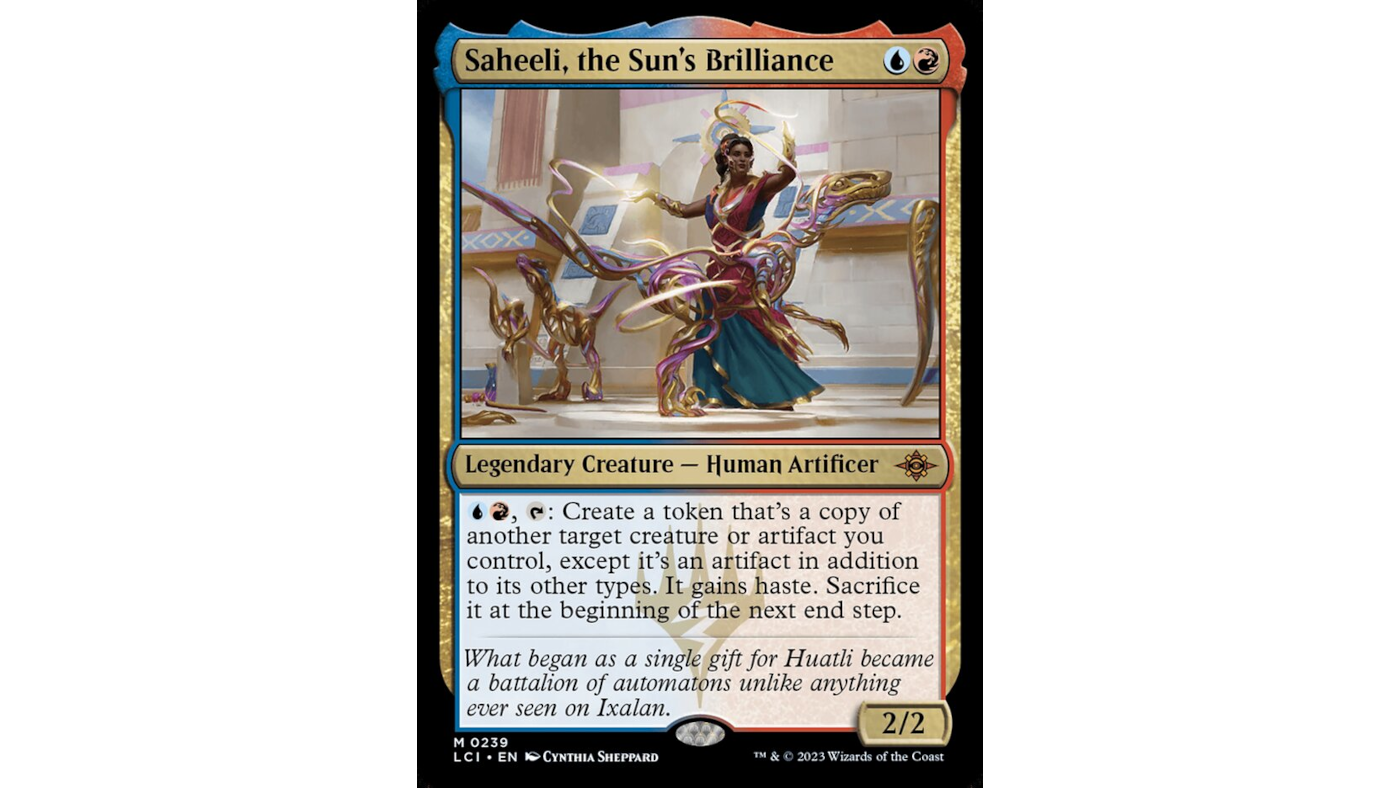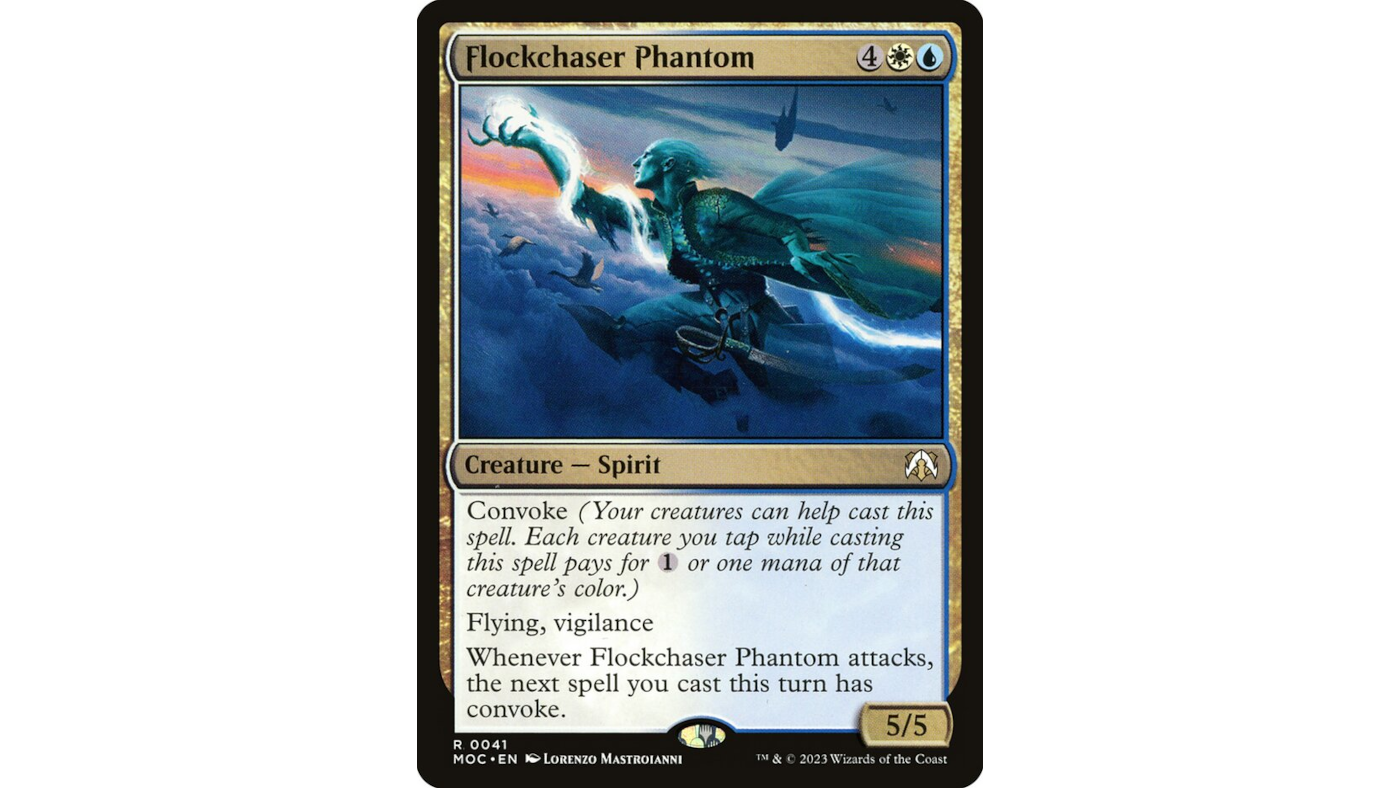
Game Designer on Magic: The Gathering
Wizards of the Coast. Nov 2021 - June 2023
Casual Play Design is responsible for looking at every single physical Magic: The Gathering card produced by Wizards of the Coast and making sure that they are the best designs possible for casual formats - especially Magic's most-played format, Commander. That means that the cards I had input on include all physical cards released/releasing between November 2022 and Q3 2024.
I monitored all cards in products I was testing as they were changed by the set design team, simultaneously choosing cards that seemed interesting, problematic, or low-appeal and playtesting them. Then we had weekly meetings in which we made arguments for why a card deserved to be changed or redesigned. These reasons could range from power level concerns (this card's abilities are too weak or too strong), play pattern concerns (this card encourages repetitive or frustrating game actions, or makes the game stagnate), or rate concerns (this card is giving the player too many resources for not enough investment).

Saheeli, the Sun's Brilliance is a great example of a card that Casual Play Design went back and forth on. Commander is a format where decks are built around legendary creatures like Saheeli, so an incredibly versatile and appealing ability, like duplicating things, ensures this will be a popular commander with a high amount of deck diversity. However, once you have a valuable thing to copy, the player is very incentivized to keep doing so turn after turn. And this ability can be used at any time, so if the Saheeli player has a wide variety of valuable or threatening things to copy, their opponents can feel like they have no viable routes forward to attack the Saheeli player's strategy. Even destroying Saheeli herself can feel sub-optimal, since Commanders can be replayed. That's two play pattern concerns and a rate concern!
Should Saheeli have cost three mana? Should we have restricted the ability's use to only on your turn? Should we have combined one of these nerfs with a compensative buff to some other aspect of the card? I and another teammate argued that there should be no change. We believed Saheeli (and her ability) were costed correctly. We felt the play pattern concerns were valid, but all deck types can attack the strategy by removing either Saheeli or her targets. We did not share the rate concerns, since Saheeli's activated ability can't normally be used the turn she is played, nor more than once each turn cycle.

Some cards are changed for larger, structural reasons. The product Flockchaser Phantom was in heavily spotlighted the convoke mechanic, and incentivized you to cast as many spells with convoke as possible. The issue was, there just aren't that many cards in Magic's history that use this mechanic. The product had other cards that granted convoke to your spells, but I noticed in playtesting that Casual Play Designers were still running low on convoke spells. I spoke to our team leader, Melissa DeTora, and to the set designer, Ethan Fleischer, and we changed Flockchaser Phantom from its old design to the design it has above. Even though there was nothing wrong with the former card, it wasn't wowing us, and the current card serves the overall product much better.

Some cards are part of a cycle of linked designs, and changes to one card cascade into others. Originally, Solphim doubled all damage, and Zopandrel doubled the mana your lands produced. I called Zopandrel out as a card that needed to change. Not only are mana doublers frequently problematic from a power standpoint, I found that doubling your mana thematically broke this cycle for me. All the other domini doubled something fairly specific, but when you double your resources, you indirectly double everything else too. Working closely with the set lead, Adam Prosak, we identified power and toughness as the best route forward for what Zopandrel should double. This was too similar to Solphim's damage doubling, so we restricted Solphim to only doubling non-combat damage. Thankfully, this nerf had no negative affect on Solphim's appeal. In fact, the Dominus cycle has been one of Magic's best-received cycles ever!
Finally, as a member of Magic Research and Development, I also spent time on the exploratory and vision design for several Magic: The Gathering sets, including the Duskmorn set and also the recently-announced Marvel set, coming out in Q3 2024 and sometime in 2025, respectively. Exploratory and vision design are the early stages of a product's life cycle, where the needs of the set are still being understood and teams are brainstorming what old mechanics could return and what new mechanics should be developed to support those set needs. For now, I can't say anything about my contributions to the sets I helped work on - but I was very happy to be able to contribute to those mechanical discussions, and I look forward to seeing them released to the public one day.